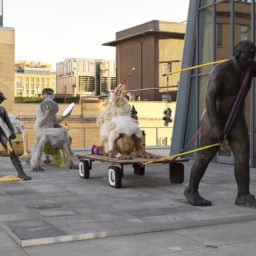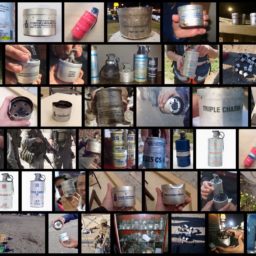Once again, the Whitney Biennial has become a flashpoint in the contemporary art world as a number of artists have dramatically withdrawn their work from what is widely regarded as America’s most consequential group exhibition in order to protest the museum’s leadership. Specifically at issue is Whitney Museum board vice chair Warren Kanders, whose corporate portfolio includes Safariland, a maker of tear gas used on migrants at the US-Mexico border, and Sierra Bullets, which allegedly has supplied the Israeli army with munitions fired upon Palestinians at the border in Gaza.
Coming amid a steady drumbeat of protests that groups like Decolonize This Place have been leading against the museum since the spring, the defections swiftly followed an Artforum article by artists and writers Hannah Black, Ciarán Finlayson, and Tobi Haslett that labeled the show “The Tear Gas Biennial” and called upon participating artists to withdraw.
On a recent trip to the Whitney, artnet News found that visitors to the waterfront museum didn’t seem aware of the controversy roiling its marquee exhibition, and the protesting artists’ works had not yet been removed. (The Whitney says it is coordinating logistics but has agreed to heed the artists’ requests.) On social media, however, a lively debate is taking place in the art community between outspoken supporters of the artists’ stance and others who argue that the protest is the act of cynically calculating opportunists who have already benefited from two months of exposure through the show. (Only one artist invited to participate in the biennial, Michael Rakowitz, had protested Kanders by dropping out of the show before its opening this May.)
So, who are these artist defectors, and how do they explain their decisions to pull out? Here are dossiers on the eight artists so far, with more to be added should the protest spread.
NICHOLAS GALANIN
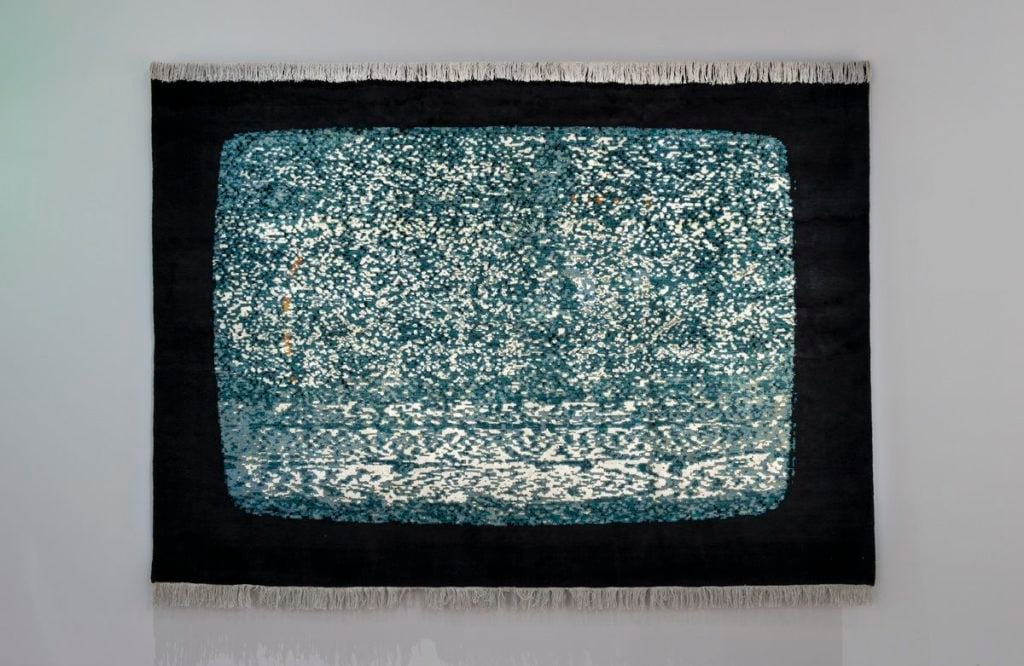
Nicholas Galanin, White Noise, American Prayer Rug (2018). Image courtesy the artist. Photo: Craig Smith.
Born: 1979 in Sitka, Alaska; lives in Sitka, Alaska
Date of withdrawal: Friday, July 19
In their own words: On NPR’s Morning Edition airing Monday, July 22, Galanin said withdrawing “was a really easy decision,” and that, although he knew about Kanders’s businesses beforehand, he felt that “as a Native American or Indigenous artist, it’s really important that we show up in some of these spaces.”
Work in the show: A wall-hung tapestry titled White Noise, American Prayer Rug that several critics described as a highlight of the show. Woven with the image of what seems to be a television set filled with static, it examines American culture’s relationship with white noise, an acoustic vibration that is often used to drown out unwanted sounds.
Best known for: Work that explores the complexities of contemporary Indigenous identity, culture, and representation.
On view elsewhere: The Biennial of Sydney and a solo exhibition at Peter Blum Gallery in New York in 2020; a solo exhibition at Law Warschaw Gallery at Macalester College in St. Paul, a solo show at Art Mur in Montreal, and an installation at the Festival of Cool in Toronto, all opening this September.
NICOLE EISENMAN

Nicole Eisenman, Procession (2019). Courtesy of the artist, Vielmetter Los Angeles, and Anton Kern Gallery, New York. Photograph by Object Studies.
Born: 1965 in Verdun, France; lives in Brooklyn, New York
Date of withdrawal: Friday, July 19
In their own words: Eisenman was among four artists who wrote a letter to exhibition curators Rujeko Hockley and Jane Panetta on Friday calling for their works’ removal from the exhibition. “We found ourselves in a difficult position: withdraw in protest or stay and abide a conflicted conscience,” they wrote. “We decided to participate. But the Museum’s continued failure to respond in any meaningful way to growing pressure from artists and activists has made our participation untenable.”
Work in the show: The entirety of the Whitney’s sixth-floor terrace has been given over to Eisenman’s sculptural ensemble Procession, a sad, stumbling parade of mixed-media creations made with plaster, metal, and fiberglass, with a central figure on hands and knees that periodically farts smoke. It was one of the most admired works in the exhibition, achieving near mascot status for the biennial as a whole.
Best known for: A two-time Whitney Biennial veteran and Guggenheim fellowship winner whose paintings are also currently featured in the Venice Biennale, Eisenman is among the most renowned of this year’s biennial cohort. She rose to prominence on the strength of her figurative painting but has also increasingly attracted attention for her sculptures in recent years, particularly after a public fountain she made for Skulptur Projekte Münster was vandalized. She also co-founded the queer/feminist curatorial initiative Ridykeulous with A.L. Steiner, and drew plaudits for her painting of a lesbian sex act that was included in the 2014 edition of Manifesta held in Russia, where repressive laws target the LGBT community.
On view elsewhere: In addition to her Venice showing, Eisenman’s Sketch for a Fountain—the sculpture that was vandalized in Münster—is now in a survey at the Nasher Sculpture Center in Dallas through October 27. Another piece inspired by the work, Grouping of Works from Fountain, was installed last month in Boston by a local real estate company as part of a permanent public art project. Closer to her home, Eisenman is included in the group show “7 Painters” at Greene Naftali in New York, on view through August 9.
KORAKRIT ARUNANONDCHAI

Korakrit Arunanondchai, with history in a room filled with people with funny names (2017). Photo: Ron Amstutz.
Born: 1986 in Bangkok, Thailand; lives in New York and Bangkok
Date of withdrawal: Friday, July 19
In their own words: “The Museum’s continued failure to respond in any meaningful way to growing pressure from artists and activists has made our participation untenable,” said the letter that Arunanondchai co-wrote with fellow biennial artists Meriem Bennani, Nicole Eisenman, and Nicholas Galanin. “The Museum’s inertia has turned the screw, and we refuse further complicity with Kanders and his technologies of violence.”
Work in the show: with history in a room filled with people with funny names 4 (2017), which combines footage of dancers covered in body paint and a turtle crawling over LED lights, among other uncanny and entrancing imagery.
Best known for: Arunanondchai’s output comprises film, sculpture, performance, and painting—all of which is often mixed together in trippy multimedia installations that explore both hypothetical human futures and his own ancestral past. The Thai artist has had solo shows at MoMA PS1, the Kiasma Museum of Contemporary Art in Helsinki, the Ullens Center for Contemporary Art in Beijing, and the Palais de Tokyo in Paris.
On view elsewhere: Arunanondchai contributed one multichannel film and one sculptural installation to the 58th Venice Biennale, on view now through October 5. His work will also be included in the 16th Istanbul Biennial when it opens in September, and this year’s Singapore Biennale, which kicks off in November.
CHRISTINE SUN KIM
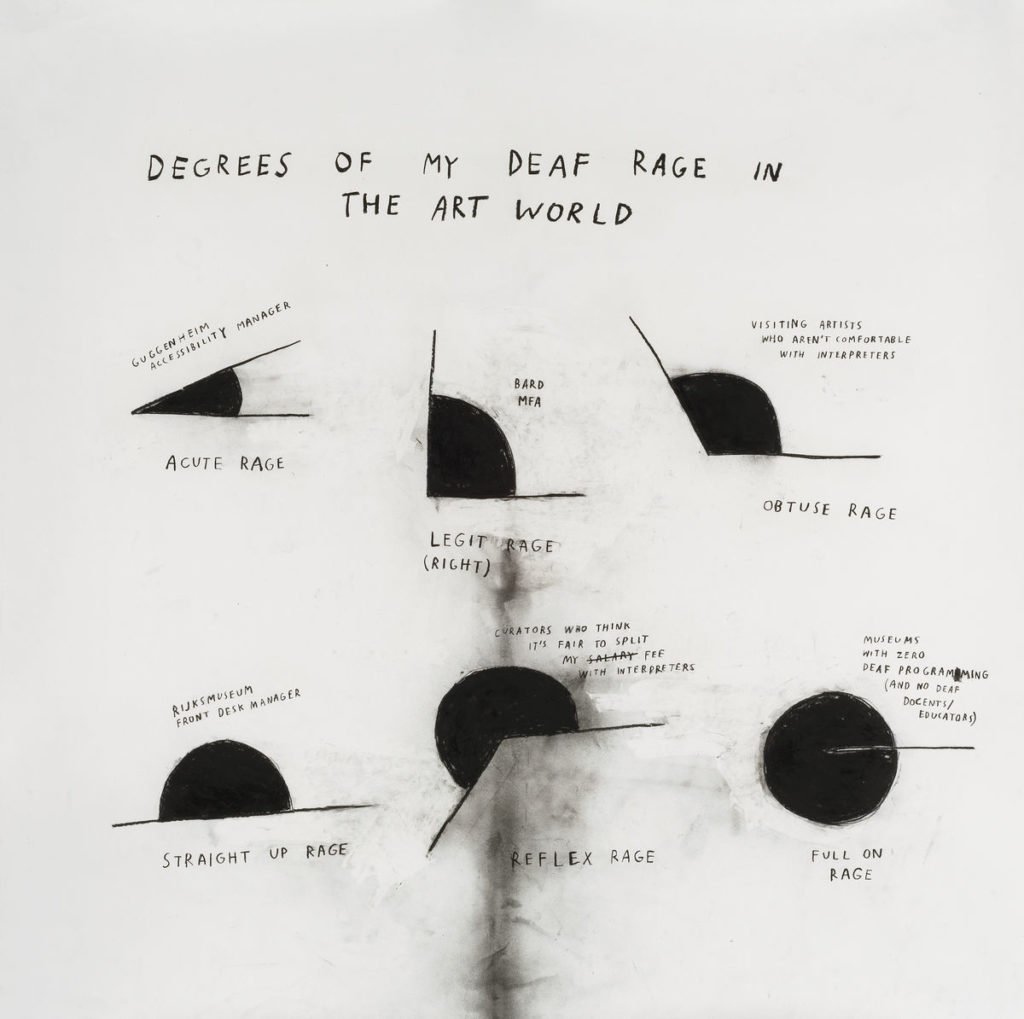
Christine Sun Kim, Degrees of My Deaf Rage in the Art World (2018). Courtesy of the artist and White Space, Beijing.
Born: 1980 in Orange County, California; lives in Berlin, Germany
Date of withdrawal: Saturday, July 20
In their own words: “As a mother to a 2-year-old daughter, it terrifies me that my work is currently part of a platform that is now strongly associated with Kanders’s teargas-producing company Safariland,” Kim told the Biennial’s curators, according to the New York Times. “I do not want her to grow up in a world where free and peaceful expression is countered with means that have left people injured and dead.”
Work in the show: A series of minimal charcoal graph drawings that chart what the artist, who was born deaf, calls “deaf rage,” laying out the various degrees of anger and frustration provoked by experiences in the art world and beyond that marginalize people with hearing disabilities.
Best known for: Kim has worked in film, ceramics, installations, and performative lectures, but she’s probably best known for her “deaf rage” drawings.
On view elsewhere: Kim will open a solo exhibition at the MIT List Visual Arts Center in Boston next February.
MERIEM BENNANI
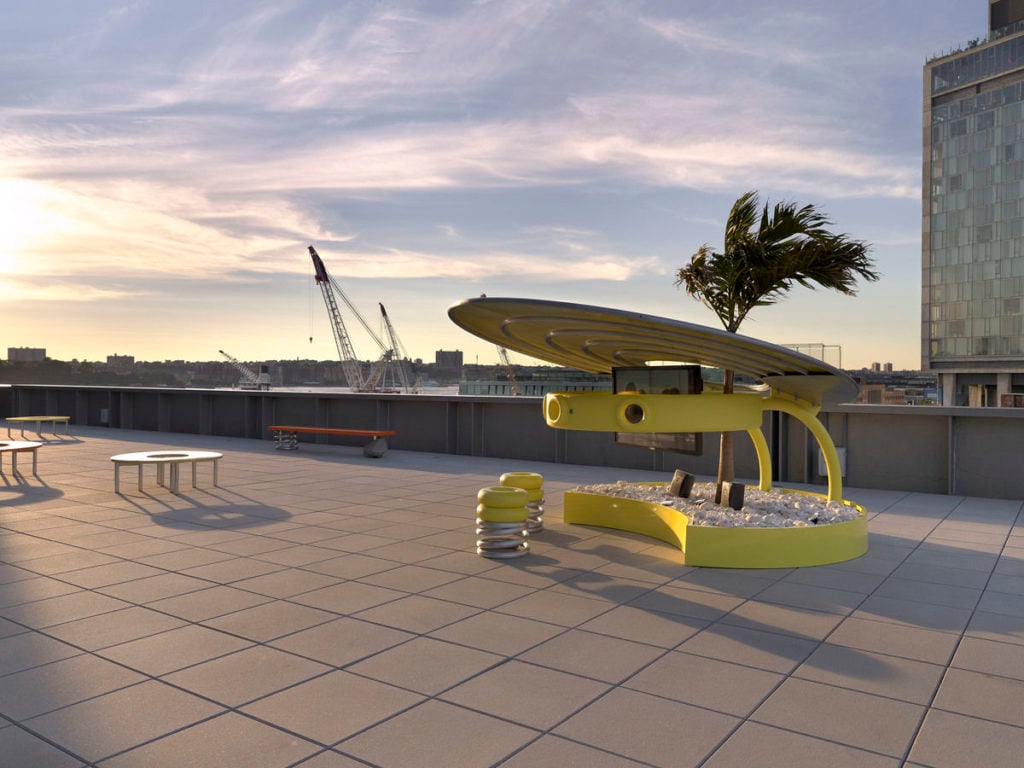
Meriem Bennani, Pony Tila (2019) screening MISSION TEENS: French School in Morocco (2019). Photo: Ron Amstutz.
Born: 1988 in Rabat, Morocco; lives in Brooklyn, New York
Date of withdrawal: Friday, July 19
In their own words: “We refuse further complicity with Kanders and his technologies of violence,” said the letter that Bennani co-wrote with the three other biennial artists in announcing their withdrawal from the exhibition.
Work in the show: MISSION TEENS: French school in Morocco (2019) is being screened as an interactive video installation on the fifth-floor roof, featuring plants and futuristic seating, and displays interviews the artist conducted with Moroccan teenagers who attend the French schools that remain as traces of the country’s colonial past.
Best known for: At 31 years old, making her one of the youngest of the biennial’s 75 artists, Bennani is known for her digitally altered video artworks that incorporate animation and draw on the language of reality TV and documentaries. Her work, which investigates themes of national identity, gender, and sexuality, has been shown at Art Dubai, the Shanghai Biennale, and, in New York, at MoMA PS1, the Jewish Museum, and the Kitchen.
On view elsewhere: Bennani has work in the summer group show “Dog Days” at CLEARING in Brooklyn through August 9. Overseas, “Raw Queens: Meriem Bennani & Fatima Mazmouz” is on view through September 14 at the Mosaic Rooms in London, and she is included in the Biennial of Moving Images in Turin, through September 30, and “Horizontal Vertigo” at the Julia Stoschek Collection in Düsseldorf, through April 26, 2020.
EDDIE ARROYO
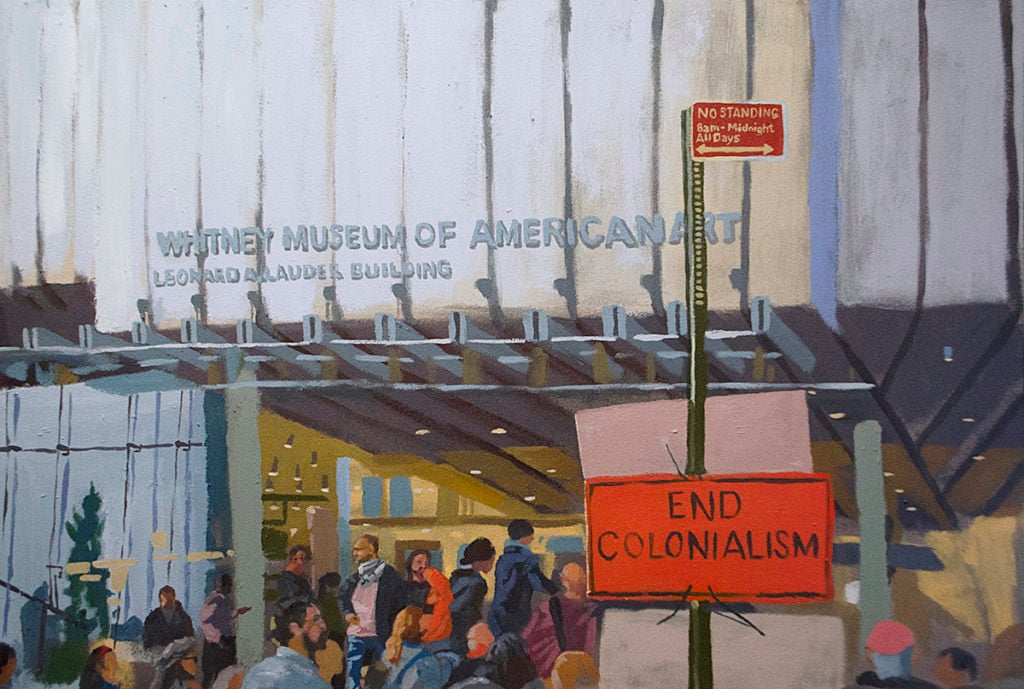
Eddie Arroyo, May 17, 2019, 7:19 pm (2019). Courtesy of the artist and Spinello Projects.
Born: 1976 in Miami, Florida; lives in Miami, Florida
Date of withdrawal: Friday, July 19
In their own words: The demand for his work’s withdrawal came from Miami-based gallery Spinello Projects on behalf of both Arroyo and Agustina Woodgate, with the explanation that “the request is intended as condemnation of Warren Kanders’s continued presence as Vice Chair of the Board and the Museum’s continued failure to respond in any meaningful way to growing pressure from artists and activists.” Arroyo additionally told Hyperallergic, “My decision is in solidarity with the artists who have already asked for their artwork to be removed.”
Work in the show: Four paintings that depict the corner building in Miami’s Little Haiti neighborhood as it evolved over the course of three years of gentrification, transitioning from a vibrant cafe that functioned as a community gathering place to a vacant, graffiti-covered shell.
Best known for: Documenting how commercial buildings are being replaced by newer developments, part of which he says he intends as a way of “chronicling the loss of a community’s cultural, social, and economic fabric.”
On view elsewhere: An exhibition titled “Within Time” at Spinello Projects showcasing work by Arroyo and Woodgate was meant to run through July 31, but has been cancelled in solidarity with the artist’s withdrawal from the biennial. Arroyo will be featured in a group show titled “Landscape Painting,” at Spinello Projects this December during Art Basel Miami Beach.
AGUSTINA WOODGATE
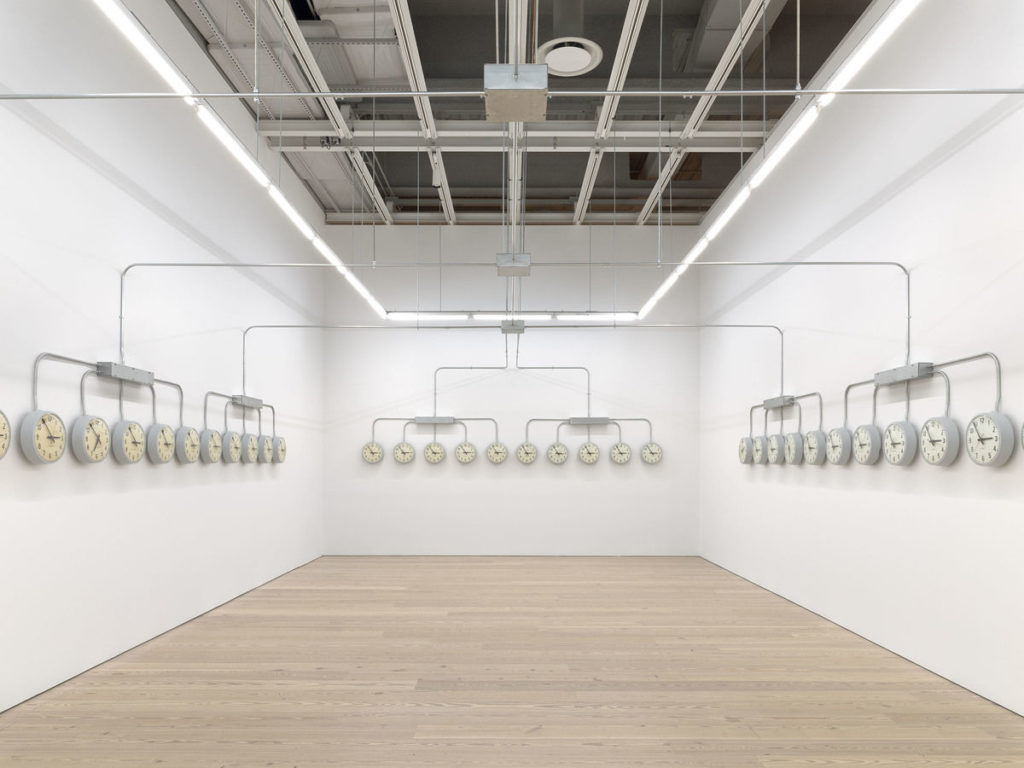
Agustina Woodgate, National Times, 2016/2019 (2016/19). Photograph by Ron Amstutz. Courtesy of the artist and Spinello Projects.
Born: 1981 in Buenos Aires, Argentina; lives in Miami and Amsterdam
Date of withdrawal: Friday, July 19
In their own words: In a statement to Hyperallergic, Woodgate quoted from Hegel’s 1821 essay Philosophy of Right, saying, “Slavery occurs in man’s transition from the state of nature to genuinely ethical conditions; it occurs in a world where a wrong is still right.”
Work in the show: The installation National Times, consisting of a closed-circuit group of 40 analog clocks synchronized to the power grid in the “master/slave” configuration, a technical model in which one device (the master) dictates the operations of the other devices (the slaves). In Woodgate’s piece, the “slave” clock hands are equipped with sandpaper, so that as the minutes and hours tick by the numbers on the clock face are methodically scratched out, until they are completely erased.
Best known for: Public projects and installations that investigate the social relationships between people and institutions. Her “erasure” techniques in National Times are also implemented in world maps and other ephemera, and she’s also created sculptures out of human hair and recycled stuffed animals.
On view elsewhere: An exhibition titled “Within Time” at Spinello Projects in Miami showcasing work by Arroyo and Woodgate was meant to run through July 31, but has been cancelled in solidarity with the artist’s withdrawal from the biennial. Along with Arroyo, Woodgate will be featured in a group show titled “Landscape Painting,” at Spinello Projects this December during Art Basel Miami Beach.
FORENSIC ARCHITECTURE
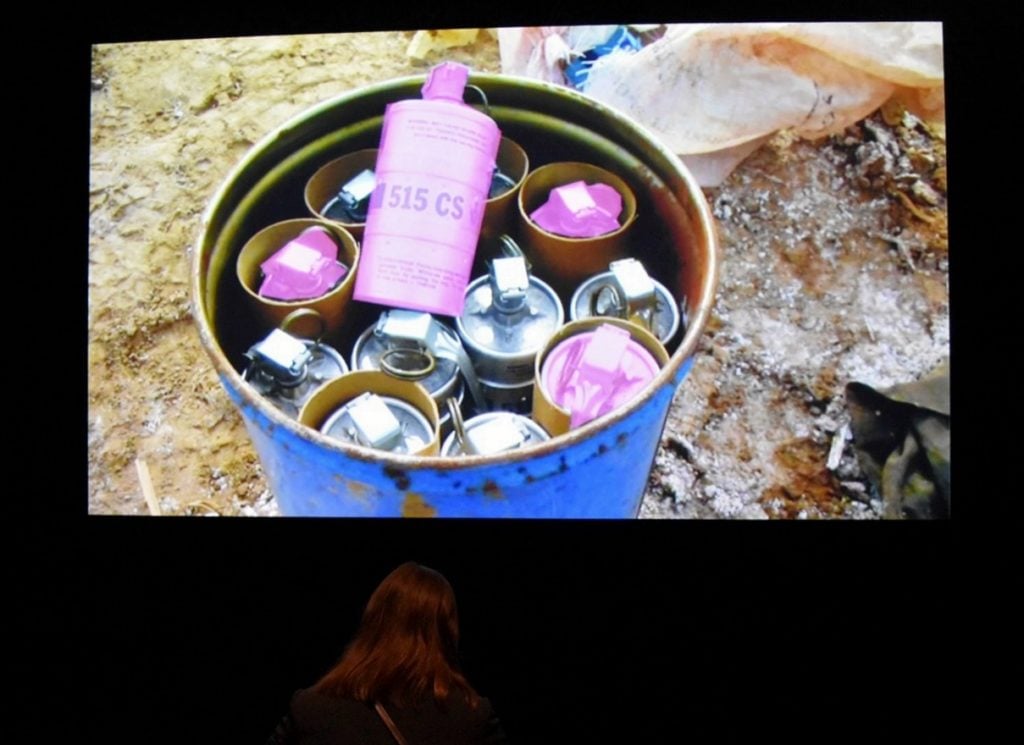
Installation view of Forensic Architecture, Triple-Chaser (2019). Image: Ben Davis.
Established: 2010 in the United Kingdom, founded by the architect Eyal Weizman and consisting of Christina Varvia, Sarah Nankivell, Samaneh Moafi, Ariel Caine, Simone Rowat, Nicholas Masterton, Nathan Su, Stefanos Lividis, Robert Trafford, Lachlan Kermode, Nicholas Zembashi, Martyna Marciniak, Alican Aktürk, and Hannah Meszaros-Martin, plus eight additional research fellows.
Date of withdrawal: Sunday, July 21
In their own words: In a statement to artnet News, Forensic Architecture said: “We have not set a deadline for withdrawal. Our complaint is not with the curators, Ru and Jane, who have been wonderful to work with throughout our involvement the Biennial, and as such we do not want to force them into a difficult position by demanding a deadline. But that said, we (and I’ve no doubt all the other artists who have requested to withdraw) would expect our work to be removed in a timely fashion.”
Work in the show: Triple-Chaser is a 15-minute video, narrated by former Talking Heads singer David Byrne, that deals directly with the products made by Safariland, the company for which Warren Kanders serves as CEO and which produces weapons for the police and military, including tear gas that has been used at the US border against migrants. Another segment of the video examines Sierra Bullets, another Kanders company that Forensic Architecture now alleges made bullets used by the Israeli army against Palestinians at the border in Gaza.
Best known for: Forensic Architecture is a research agency based at Goldsmiths, at the University of London, that investigates cases of human-rights violations, with and on behalf of communities affected by political violence and in partnership with NGOs, international prosecutors, environmental groups, and media organizations. They were nominated for the 2018 Turner Prize.
On view elsewhere: Forensic Architecture will be exhibiting at the 2019 Chicago Architecture Biennial, opening this September.












